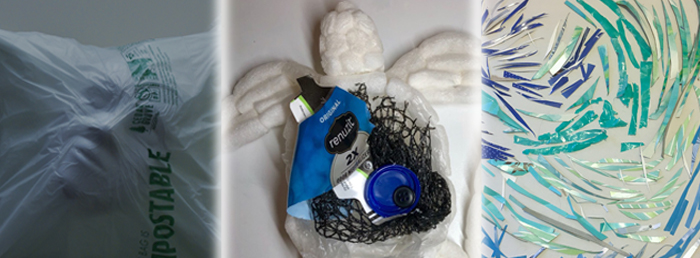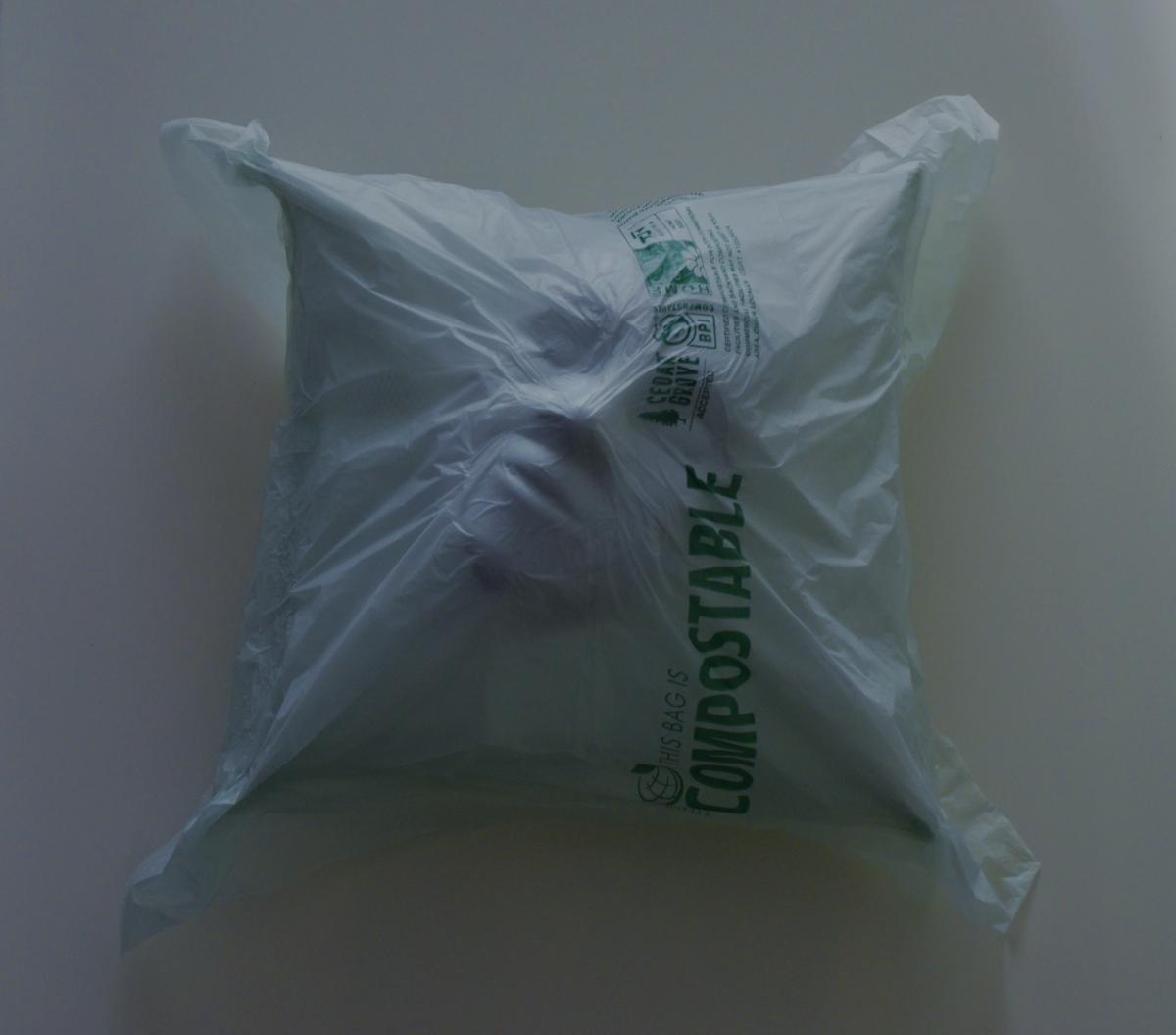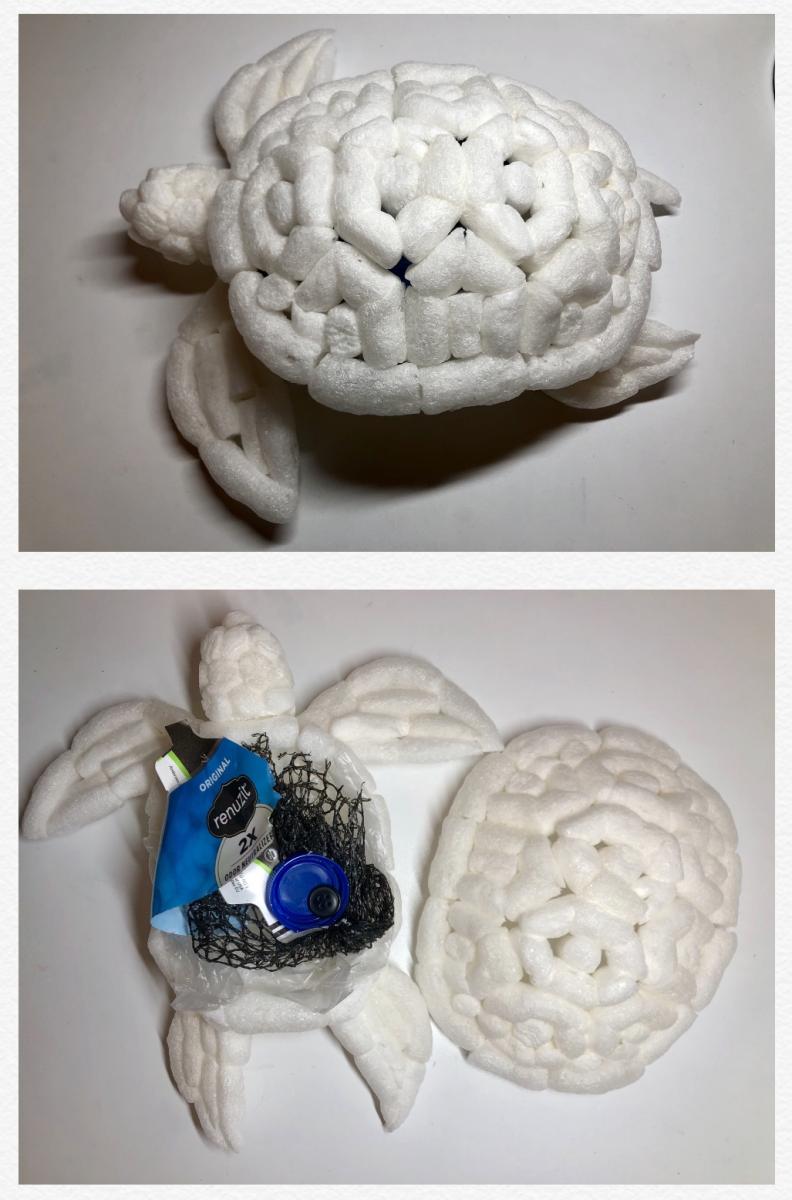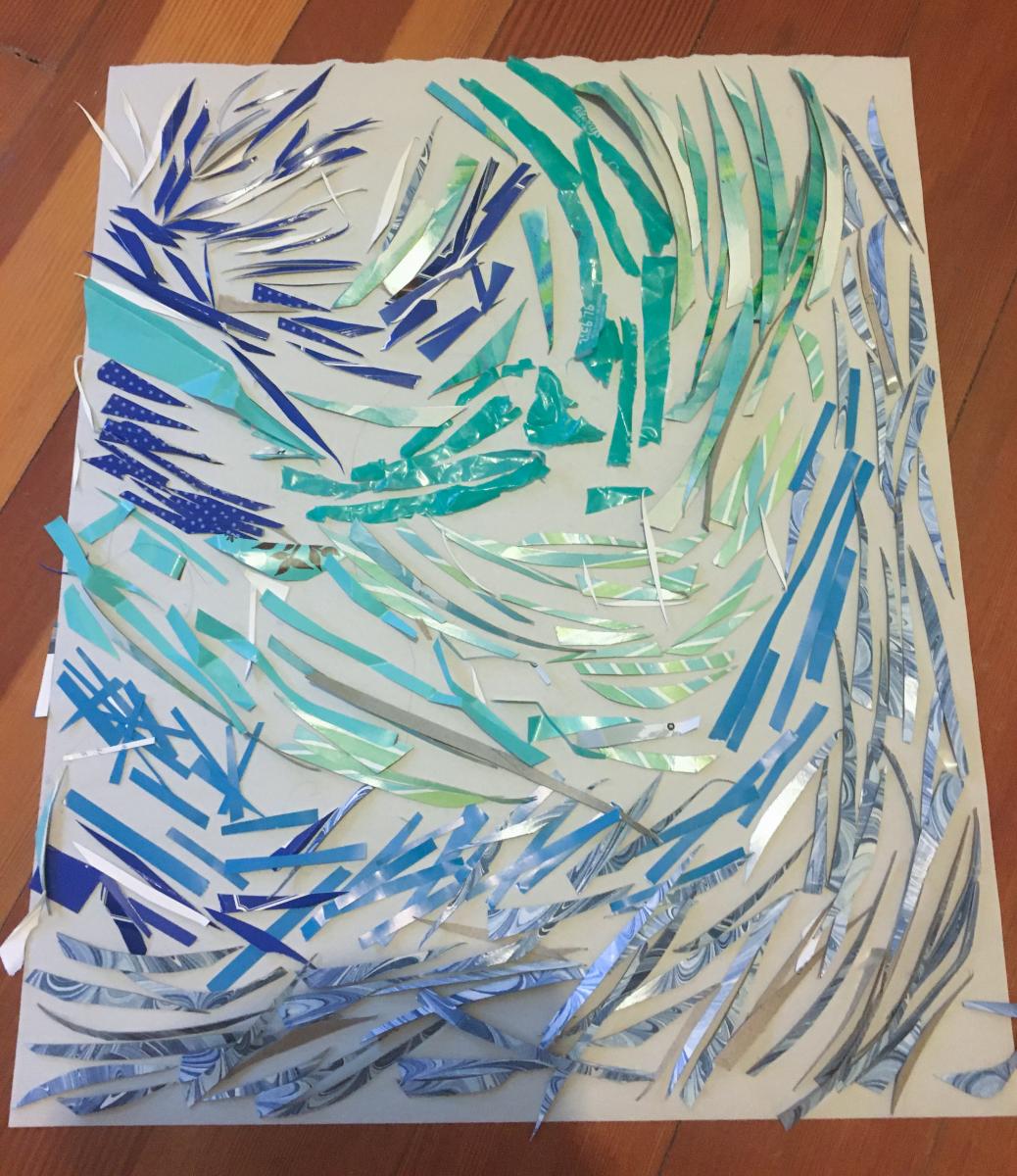
As part of RecycleMania, UW Recycling hosted a Trash Art Contest where UW students and staff submitted art pieces made of trash, recyclable and salvage materials. Three winners were chosen based on the criteria of: originality/creativity, theme of sustainability, material usage and relevance to personal and/or UW campus waste.
The UW Recycling selection committee was blown away at the art pieces that were submitted. The team was impressed at how the winning art pieces put environmental and sustainability ideas to the forefront. Pooja Kumar, Waste Diversion Assistant at UW Recycling, felt that the art pieces broadened her perspective on how materials could be used. "The art of repurposing items initially made to be disposed of, and creating art pieces spreads the message of how society should question their outlook on single-use items."
"This contest showed just how much the UW community cares about sustainability," said UW Recycling Waste Reduction and Diversion Assistant Gabi Coeuille. "I was surprised by how emotional each art piece was, and how each showed a complex struggle that exists in our relationship with waste."
Each art piece is highlighted below. If you have any questions about the contest or the art pieces, please email recycling@uw.edu.

First Place Winner: Discomfort by Vivian Mak
Art piece created from compostable bags, wire mesh and a plastic mask that was thrown out.
Brief description and theme of the art piece
This sculptural pillow represents the comfort humans constantly seek in convenience in a time where our growing concerns of consumption and waste levels cause a feeling of being trapped.
How is this relevant to your personal and/or UW campus waste?
Experimenting with sculptural art for the first time this past summer with CHID: Art and Innovation, it became a special project centered around re-purposing disposable objects. I approached this sculpture as an extension of that project. As a capitalist society we are rapidly producing and consuming more than we are able to reflect and question where this waste actually goes, and what happens when we no longer have the space to contain it. As we feel the weight of responsibility as an individual, the complexity of what is waste as we compartmentalize objects into biodegradable, compostable, recycle, and so on, becomes overwhelming.
Second Place Winner: Sea Turtle Dying from Ocean Trash by Bora Kim

A sea turtle sculpted out of packing peanuts. Other plastic materials such as a plastic bag, a plastic mesh bag and a plastic button are used to express ingested plastics in a turtle's body.
Brief description and theme of the art piece
Sea turtles and other marine creatures mistake plastics and other ocean trash as food because they are confusing plastic bags for jellyfish when floating in the ocean. This causes blockages within their digestive system and eventual death. Therefore, this piece represents how marine creatures are threatened by anthropogenic trash and how important recycling is for a better environment.
How is this relevant to your personal and/or UW campus waste?
Since we live with wildlife in the Pacific Northwest, we are coexisting with the animals commonly found within and outside the UW campus. UW campus is exposed to the Pacific Northwest ecosystems as the learning environment. As many knows, non-recycled materials go where all trash goes, to the landfill, and this is a major contributor to the ocean trash in the Pacific. These materials used for this piece show that marine creatures including sea turtles are killed by plastic debris that we consume and it can lead to greater problems when species are allowed to enter the food chain. Therefore, this piece addresses that reducing the use of plastics and recycling will be important in environmental perspectives in the way that these major changes can promote positive attitudes for a better environment which is for the next generations.

Third Place Winner: Swells by Nadine Waldmann
Art piece was made with a variety of plastic bags, containers and old boxes in the garbage or recycling.
Brief description and theme of the art piece
I love all bodies of water, and water is so vital to Seattle. I'm constantly concerned about the amount of the plastic and waste dumped in our lakes and oceans. This piece represents a wave made of the trash and debris swirling around.
How is this relevant to your personal and/or UW campus waste?
The waste I collected was from my office and my home. I see how much waste comes through our office, especially in the mail. Countless UW mailings and magazines are just dumped daily. While difficult at work, it is much easier to reduce waste in my personal life.